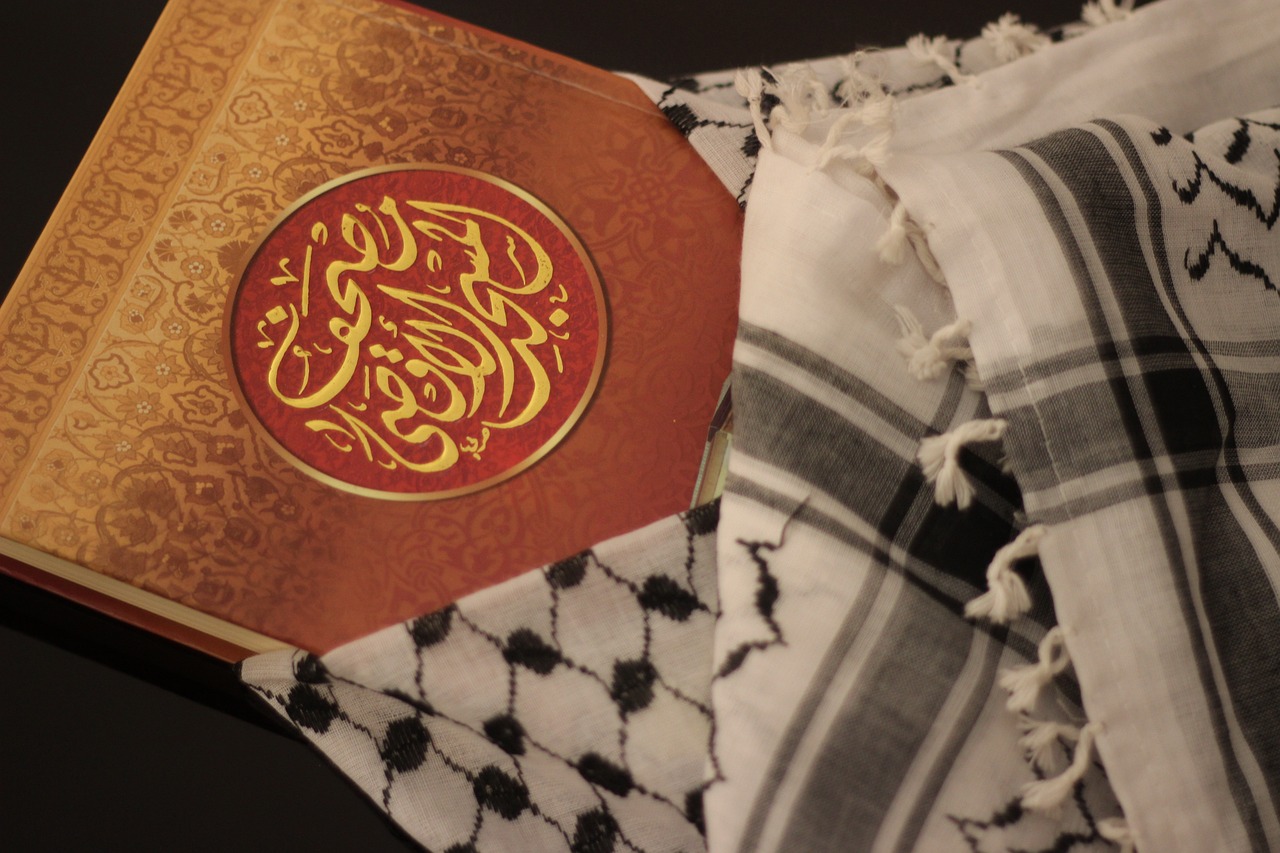Learn to Read the Quran: A Step-by-Step Guide for Beginners
Summery:
Learn to Read the Quran, Whether you are a beginner or an advanced learner, the Quran remains a source of light and guidance for every Muslim. Stay committed to learning, and Allah will bless your efforts!
Table of Contents
Toggle1. Introduction
Learning to read the Quran is one of the most rewarding spiritual journeys for any Muslim. Whether you are a beginner, a new Muslim convert, or a parent teaching children, mastering the recitation with Tajweed ensures accurate pronunciation and understanding.
This guide will walk you through everything from understanding the Arabic alphabet to advanced Quranic recitation techniques. Whether you want to memorize Quranic verses, improve pronunciation, or join online Tajweed courses, this comprehensive step-by-step guide will help you achieve fluency in reading the Quran with clarity, accuracy, and devotion.

2. Understanding the Structure of the Quran
The Quran is divided into 114 chapters (Surahs), further split into verses (Ayahs). It follows a non-linear structure, meaning it is not arranged in chronological order but rather according to divine wisdom.
- Meccan vs. Medinan Surahs: Meccan Surahs focus on faith, while Medinan Surahs address laws and guidance for society.
- Juz (Sections): The Quran is divided into 30 Juz (sections) for easier memorization and reading.
- Themes in the Quran: It covers Tawheed (Oneness of God), Prophethood, Divine Laws, and Stories of the Prophets.
Understanding this structure helps in better comprehension and smooth recitation.
3. The Importance of Learning to Read the Quran
Spiritual Benefits
- Reciting the Quran brings peace, rewards, and closeness to Allah.
- It strengthens faith (Iman) and improves spiritual well-being.
Practical Benefits
- Understanding Quranic Arabic enhances comprehension of prayers (Salah).
- Learning Tajweed improves pronunciation, ensuring accurate recitation.
4. Arabic Alphabet: The Foundation of Quranic Reading
Mastering the Arabic alphabet is crucial for reading the Quran fluently.
Key Points
- 28 Arabic Letters form the foundation of the language.
- Each letter has different forms based on its position in the word.
- Phonetics play a vital role in Quranic recitation.
📌 Tip: Use Arabic alphabet worksheets, flashcards, and games to practice effectively.
5. How to Write Arabic Letters and Their Sounds
To read the Quran correctly, one must first write Arabic letters accurately.
Key Techniques
- Practice tracing letters using Arabic alphabet tracing activities.
- Understand letter positions: Isolated, Initial, Medial, and Final forms.
- Listen to audio resources for Arabic pronunciation to ensure accuracy.
6. Common Mistakes in Arabic Alphabet Pronunciation
New learners often struggle with:
- Mispronouncing letters with similar sounds (e.g., س vs. ص, ض vs. د).
- Ignoring Arabic diacritics, which change word meanings.
- Skipping proper articulation points (Makharij) of each letter.
Using Tajweed audio lessons can significantly improve pronunciation.
7. Arabic Diacritics: Understanding Quranic Pronunciation
Diacritics (Harakat) are marks placed on letters that guide pronunciation.
Types of Diacritics
- Fatha (ـَ ) – Short “a” sound
- Kasra (ـِ ) – Short “i” sound
- Damma (ـُ ) – Short “u” sound
- Sukoon (ـْ ) – Letter is silent
Mastering diacritics is essential for correct Quranic recitation.
8. Reading the Quran with Tajweed: Importance and Benefits
Tajweed ensures the Quran is read as it was revealed.
- Helps maintain the correct meaning of words.
- Improves clarity, fluency, and confidence in recitation.
- Eliminates pronunciation errors that can change meanings.
📌 Tip: Use Tajweed apps and video tutorials for guided learning.
9. Common Tajweed Terms and Their Meanings
Some essential Tajweed rules include:
- Izhar – Clear pronunciation of Noon Sakinah.
- Idgham – Merging letters smoothly.
- Ikhfa – Hiding the pronunciation slightly.
These rules enhance the rhythm and melody of Quranic recitation.

10. Step-by-Step Guide on How to Learn Tajweed
Understanding the Basics of Tajweed
Tajweed is the science of Quranic recitation that ensures proper pronunciation and phonetics. It is a necessary discipline that prevents misinterpretation and enhances spiritual connection with the Quran.
To learn Tajweed effectively, follow these step-by-step methods:
1. Learn the Arabic Alphabet and Its Phonetics
Before diving into Tajweed rules, it’s crucial to be proficient in the Arabic alphabet and the Makharij (articulation points) of each letter.
📌 Key Tips:
- Use Arabic alphabet flashcards for letter recognition.
- Listen to Tajweed audio lessons to understand phonetics.
- Practice with Arabic alphabet worksheets to improve writing skills.
2. Understand the Tajweed Rules
Some fundamental Tajweed rules include:
- Ghunnah (nasalization) – Applied in certain cases of Noon and Meem.
- Qalqalah (echoing sound) – Applied to certain letters when pronounced with Sukoon.
- Madd (Prolongation) – Lengthening specific vowels in different ways.
3. Join a Tajweed Course or Hire a Tutor
Tajweed certification programs help learners progress systematically. Many online Quran memorization courses also include Tajweed training.
📌 Recommended Learning Methods:
- Enroll in live Quran tutoring sessions.
- Use interactive Quran learning platforms for structured practice.
- Access free resources for learning Quran like YouTube video tutorials.
4. Practice Daily and Recite with a Teacher
Reading the Quran with Tajweed requires consistent practice and correction. A certified Quran teacher can guide pronunciation and help avoid mistakes.
📌 Daily Practice Routine:
- Recite one page per day, focusing on correct pronunciation.
- Listen to Quranic recitations by expert Qaris.
- Use Tajweed apps with real-time pronunciation feedback.
By following these steps, one can master Quranic recitation with proper Tajweed and spiritual depth.
11. Tajweed Certification Programs for Advanced Learning
For those who want to master Tajweed and teach others, Tajweed certification programs provide structured learning.
Types of Tajweed Certification Programs
- Beginner-Level Courses – Covers basic Tajweed rules and pronunciation.
- Intermediate Courses – Focuses on complex Tajweed concepts like Makhraj, Madd, and Qalqalah.
- Advanced Certification – Designed for those who wish to become Quran teachers or Imams.
Where to Enroll in Tajweed Certification Programs?
- Online Quran academies offer certification courses with live tutors.
- Islamic universities provide professional degrees in Quranic studies.
- Local mosques and madrasas conduct in-person Tajweed training.
Benefits of Tajweed Certification
- Enhances Quran recitation accuracy and fluency.
- Provides credibility for teaching Tajweed.
- Boosts spiritual connection through correct pronunciation.
📌 Tip: Consider Tajweed assessment tests to track progress before enrolling in a certification program.
12. Quranic Vocabulary: Understanding Key Words and Phrases
The Importance of Learning Quranic Vocabulary
Understanding Quranic words enhances comprehension, making recitation more meaningful.
📌 Commonly Used Quranic Words:
- Rahma (رحمة) – Mercy
- Sabr (صبر) – Patience
- Taqwa (تقوى) – God-consciousness
- Ilm (علم) – Knowledge
Ways to Learn Quranic Vocabulary
- Use Arabic-English dictionaries to explore word meanings.
- Study Quranic root words to understand related terms.
- Engage in Quran vocabulary exercises to retain knowledge.
- Listen to Quran recitations and note frequently repeated words.
Best Resources for Quranic Vocabulary Learning
- Quranic language apps with flashcards.
- Quran word meanings books for deeper analysis.
- Interactive Quran learning websites that offer structured lessons.
By mastering Quranic vocabulary, one can read and understand the Quran more effectively.
13. Interactive Quran Learning for Children
Introducing interactive learning techniques makes Quran reading enjoyable for children.
Best Interactive Methods for Teaching Kids the Quran
- Arabic alphabet games for kids make learning letters fun.
- Storytelling methods in Quran teaching help children grasp lessons.
- Visual aids for Arabic alphabet learning make memorization easier.
- Quran learning milestones for young children help track progress.
Benefits of Interactive Learning for Kids
- Increases engagement and retention.
- Makes Quran learning a fun and enjoyable experience.
- Helps in developing a love for Islamic education.
📌 Recommended Tools:
- Quran reading flashcards
- Best Quran apps for kids
- Arabic alphabet tracing activities
14. How to Teach the Quran to Toddlers and Kids
Teaching the Quran to toddlers requires patience, consistency, and creativity.
Effective Strategies for Teaching Toddlers Quran Reading
- Start with Arabic alphabet songs to introduce letter recognition.
- Use animated videos to visually demonstrate pronunciation.
- Practice Quran reading exercises for kids with engaging activities.
- Encourage daily short memorization of simple verses.
📌 Fun Activities for Kids:
- Group activities for Quran learning improve social skills.
- Quran reading challenges and competitions motivate children.
- Creative ways to teach Quran through role-playing and storytelling.

15. Quran Translation in English: Understanding the Message
Why is Quran Translation Important?
Many non-Arabic speakers struggle with understanding Quranic messages. English translations help bridge this gap by providing explanations of verses.
Recommended Quran Translations for Beginners
- The Noble Quran (Hilali & Khan) – Easy to understand.
- Sahih International – Modern and simple translation.
- The Clear Quran (Dr. Mustafa Khattab) – Designed for clarity.
Best Ways to Learn Quran with Translation
- Access Quran translation apps for daily study.
- Use Tafsir books for deeper interpretations.
- Join virtual Quran study groups for discussions.
Understanding the Quran in English helps in applying its teachings to daily life.
16. Quranic Memorization Techniques for Beginners
Why Memorizing the Quran is Important?
Memorizing the Quran is a spiritual practice that strengthens faith and builds a deeper connection with Allah. The process, known as Hifz, requires discipline, patience, and effective memorization techniques.
Step-by-Step Guide to Memorizing the Quran
1. Start with Short Surahs
Beginners should start with short surahs from Juz Amma (the 30th chapter), such as:
- Surah Al-Fatiha
- Surah Al-Ikhlas
- Surah Al-Falaq
- Surah An-Nas
2. Use the Repetition Technique
Repetition is the key to memorizing Quranic verses. Recite each verse 20-30 times before moving to the next one.
3. Utilize Audio Resources
Learn to Read the Quran. Listening to Quranic recitations by expert Qaris helps in proper pronunciation and retention. Use:
- Tajweed audio lessons
- Quran pronunciation apps
- Online Quran memorization courses
4. Create a Daily Memorization Routine
A structured routine improves consistency. Allocate specific times daily for:
- New memorization (10-15 minutes)
- Revision of previous lessons (15-20 minutes)
- Listening and reciting along with a teacher
5. Use Visual and Written Aids
- Write down verses on a whiteboard or notebook.
- Use Arabic alphabet tracing activities to enhance recognition.
- Employ Quran memorization flashcards for quick reviews.
6. Engage in Group Memorization
Learn to Read the Quran, Joining a virtual Quran study group or participating in group Quran reading sessions over Zoom enhances motivation and accountability.
By following these steps, beginners can memorize the Quran efficiently while ensuring proper pronunciation and Tajweed rules.
17. The Science of Tajweed: Understanding its Importance
What is Tajweed and Why is it Necessary?
Tajweed is the science of Quranic recitation, ensuring each letter is pronounced correctly from its articulation point (Makhraj).
Fundamental Tajweed Concepts
1. Makharij (Articulation Points)
Each Arabic letter originates from a specific point in the mouth or throat. Learning Makharij helps in pronouncing Quranic words correctly.
2. Sifat (Characteristics of Letters)
Each letter has unique qualities (Sifat) that impact pronunciation. Some examples include:
- Qalqalah (Echo sound)
- Ghunnah (Nasalization)
- Madd (Prolongation of vowels)
3. Tajweed Mistakes to Avoid
- Tafkheem vs. Tarqeeq: Confusing heavy and light letters.
- Incorrect elongation: Ignoring Madd rules.
- Mispronunciation of Arabic letters: Not learning Makharij properly.
How to Learn Tajweed Effectively?
- Enrol in Tajweed certification programs.
- Use Tajweed assessment tests to track progress.
- Listen to advanced Tajweed techniques by expert Qaris.
Mastering Tajweed science helps you read the Quran fluently and correctly.
18. How to Pronounce Quranic Words Correctly
The Role of Pronunciation in Quran Recitation
Mispronunciation of Quranic words can alter meanings. Proper pronunciation ensures correct understanding and enhances recitation beauty.
Tips for Correct Quran Pronunciation
1. Learn Arabic Phonetics
- Study the beginners’ guide to Arabic phonetics.
- Practice with Arabic tajweed pronunciation charts.
2. Use Audio and Video Resources
- Listen to video tutorials for Quranic pronunciation.
- Use audio resources for Quranic pronunciation.
3. Avoid Common Quran Pronunciation Mistakes
- Mixing Arabic and English sounds – The differences between Arabic and English alphabets affect pronunciation.
- Skipping diacritics – Arabic diacritics (harakat) change word meaning.
Best Resources for Learning Quran Pronunciation
- Quran pronunciation online courses
- Pronunciation drills for Arabic learners
- Muslim pronunciation mistakes to avoid
Practising correct pronunciation daily improves fluency and confidence in Quranic recitation.
19. Different Interpretations of the Quran
Why are There Different Interpretations?
The Quran is divinely revealed, but scholars interpret its verses based on historical, linguistic, and contextual analysis.
Major Approaches to Quranic Interpretation (Tafsir)
1. Tafsir Bil-Ma’thur (Traditional Interpretation)
- Based on Hadith and teachings of the Prophet Muhammad (PBUH).
- Example: Tafsir Ibn Kathir.
2. Tafsir Bil-Ra’y (Analytical Interpretation)
- Uses logic and reasoning in understanding verses.
- Example: Tafsir Al-Razi.
3. Tafsir Ishari (Mystical Interpretation)
- Based on spiritual and Sufi insights.
- Example: Tafsir Al-Kashani.
Best Resources for Understanding Quranic Interpretations
- Accessing Quran translations and Tafsir through online platforms.
- Studying Islamic lessons for kids to introduce basic Tafsir.
Learning about different interpretations helps in gaining a well-rounded understanding of the Quran’s messages.

20. Understanding Quranic Themes and Messages
Key Themes in the Quran
The Quran contains divine guidance on various aspects of life, morality, and faith.
1. The Oneness of Allah (Tawhid)
- The Quran emphasizes monotheism and submission to Allah alone.
2. The Purpose of the Quran
- A guide for humanity leading to success in this life and the Hereafter.
3. Moral and Ethical Teachings
- Encourages honesty, patience, kindness, and justice.
How to Apply Quranic Teachings in Daily Life?
- Daily Quran memorization routines to retain important lessons.
- Reading the Quran with Tajweed for better recitation and reflection.
By reflecting on Quranic themes, believers can apply divine wisdom in their daily lives.
21. The Quran and Modern Life: Relevance in Today’s World
How Does the Quran Guide Us in Modern Times?
The Quran is often seen as a historical revelation, but its teachings remain relevant in every era. From personal ethics to global issues, the Quran offers guidance applicable to modern life.
Key Areas Where the Quran Provides Guidance
1. Social Justice and Equality – Learn to Read the Quran
- The Quran promotes justice, fairness, and equality for all.
- It condemns discrimination based on race, gender, or status.
- Example: The Quranic principle of “no superiority of one over another except in righteousness” (Surah Al-Hujurat 49:13).
2. Financial Ethics and Business Practices
- Prohibition of Interest (Riba): The Quran warns against unethical financial dealings.
- Honesty in Trade: Encourages fair transactions and truthfulness in business.
- Zakat (Charity): Promotes wealth redistribution to support the needy.
3. Science and Knowledge
- The Quran encourages seeking knowledge and using reasoning.
- Many scientific discoveries align with Quranic verses, such as embryology, astronomy, and oceanography.
- Example: The development of the human embryo (Surah Al-Mu’minun 23:12-14).
4. Mental Health and Inner Peace
- Reciting the Quran brings spiritual peace and emotional balance.
- Verses of reassurance remind believers that Allah’s mercy is greater than any hardship (Surah Ad-Duhaa 93:1-11).
- The importance of patience (Sabr) in difficult times.
Applying the Quran in Daily Life – Learn to Read the Quran
- Daily recitation and understanding Quranic vocabulary for deeper meaning.
- Quran reading schedule for new Muslims to develop a routine.
- Interactive Quran learning platforms for easy access to knowledge.
The Quran remains a timeless source of wisdom, helping Muslims navigate the complexities of modern life.
22. The Art of Quranic Calligraphy and Its Significance
What is Quranic Calligraphy?
Quranic calligraphy is a highly revered Islamic art form, used to beautify the written words of Allah. It is seen in mosques, manuscripts, and modern Islamic art.
Different Styles of Arabic Calligraphy in the Quran
1. Kufic Script
- One of the earliest styles used in ancient Quranic manuscripts.
- Characterized by angular, geometric shapes.
2. Naskh Script
- Most commonly used for printing Qurans today.
- Features small, rounded letters for easy readability.
3. Thuluth Script
- Often found in mosque decorations.
- Known for elegant, curved letters with elongated strokes.
4. Diwani Script
- A more ornamental script, often used for official Islamic documents.
- Features intricate, flowing designs.
How Quranic Calligraphy Enhances Learning?
- Visual aids for Arabic alphabet learning make reading easier.
- Using Arabic alphabet flashcards with calligraphy improves recognition.
- Learning Arabic through the Quran with artistic elements increases engagement.
Quranic calligraphy is not just an art; it is a spiritual practice that reflects the beauty and depth of the Quranic message.
23. Tips for Teaching the Quran to Children
Why is Early Quran Education Important?
Teaching children the Quran at a young age builds strong Islamic values and fosters lifelong spiritual development.
Engaging and Fun Methods for Teaching the Quran
1. Interactive Learning with Games
- Arabic alphabet games for kids make learning letters enjoyable.
- Quran word matching games to teach Quranic vocabulary.
2. Storytelling and Quranic Stories for Children
- The Quran is full of engaging stories that teach morals and faith.
- Example: Prophet Yunus (AS) and the Whale teaches the power of repentance.
3. Visual and Hands-On Learning
- Arabic alphabet tracing activities help children recognize letters.
- Tajweed for non-Arabic speakers can be taught using color-coded charts.
4. Encouraging Memorization Through Routine
- Quran memorization techniques for children include:
- Listening to recitations before bedtime.
- Using repetition with fun rewards.
- Joining group Quran reading sessions over Zoom.
Resources for Parents and Teachers – Learn to Read the Quran
- Best Quran apps for kids to make learning digital and interactive.
- Choosing the right Quran curriculum for children based on their level.
- Parenting tips for Quran education to create a positive learning environment.
Teaching the Quran to children is a rewarding journey that strengthens their faith and develops a love for Islamic learning.
24. The Importance of Daily Quran Recitation
Why Should We Recite the Quran Daily?
- Strengthens spiritual connection with Allah.
- Enhances Quranic vocabulary and understanding.
- Provides mental peace and reduces stress.
How to Build a Daily Quran Reading Habit?
1. Set a Fixed Time for Recitation
- Morning after Fajr prayer or before sleeping at night.
- Follow a Quran reading schedule for new Muslims.
2. Start with Small Portions
- Read at least 5-10 verses daily, then increase gradually.
- Use Quran reading flashcards to track progress.
3. Focus on Understanding Meaning
- Study Quran translation in English to grasp deeper meanings.
- Refer to Quranic terminology explained for key terms.
4. Recite with Proper Tajweed
- Follow Tajweed audio lessons for correct pronunciation.
- Use best books for learning Quran pronunciation as reference.
The Benefits of Daily Quran Recitation
- Brings peace and tranquility to the heart.
- Helps in memorizing Quranic verses naturally.
- Increases blessings in daily life.
Making Quran recitation a daily habit leads to a more spiritually fulfilling life.
25. Conclusion: The Journey of Learning to Read the Quran
Why Learning the Quran is a Lifelong Journey
Learn to Read the Quran, The Quran is not just a book to be read; it is a guide for life. By learning Arabic, Tajweed, and Quranic vocabulary, we improve our understanding and deepen our faith.
Key Takeaways – Learn to Read the Quran
- Start with Quran basics – Learn the Arabic alphabet and pronunciation.
- Master Tajweed rules – Proper recitation brings clarity and meaning.
- Develop a Quran memorization routine – Small steps lead to lifelong retention.
- Make Quran learning interactive – Use online resources, games, and group sessions.

Frequently Asked Questions (FAQs) – Learn to Read the Quran
1. What is the best way to Learn to Read the Quran?
Start with learning Arabic letters, then move on to Tajweed rules and recitation practice with a teacher or online resources.
2. How can beginners improve their Quran pronunciation?
Use Quran pronunciation apps, Tajweed audio lessons, and Arabic phonetics guides to improve pronunciation.
3. What is the importance of Tajweed in Quran reading?
Tajweed ensures correct pronunciation and articulation, preserving the meaning of Quranic verses.
4. Can children start memorizing the Quran early?
Yes, children as young as three or four years old can begin learning short surahs through games and repetition.
5. What are the best online resources for learning the Quran?
Websites like Hidaya Online interactive Quran learning platforms and live Quran tutoring sessions help learners at all levels.
Half Week Free Trial Classes
Upon completion of your course, you will receive a complimentary certificate. What are you waiting for, then?
Enroll in our class now for a free trial.
Read More: What Are the Best Methods to Learn Quran Reading?



